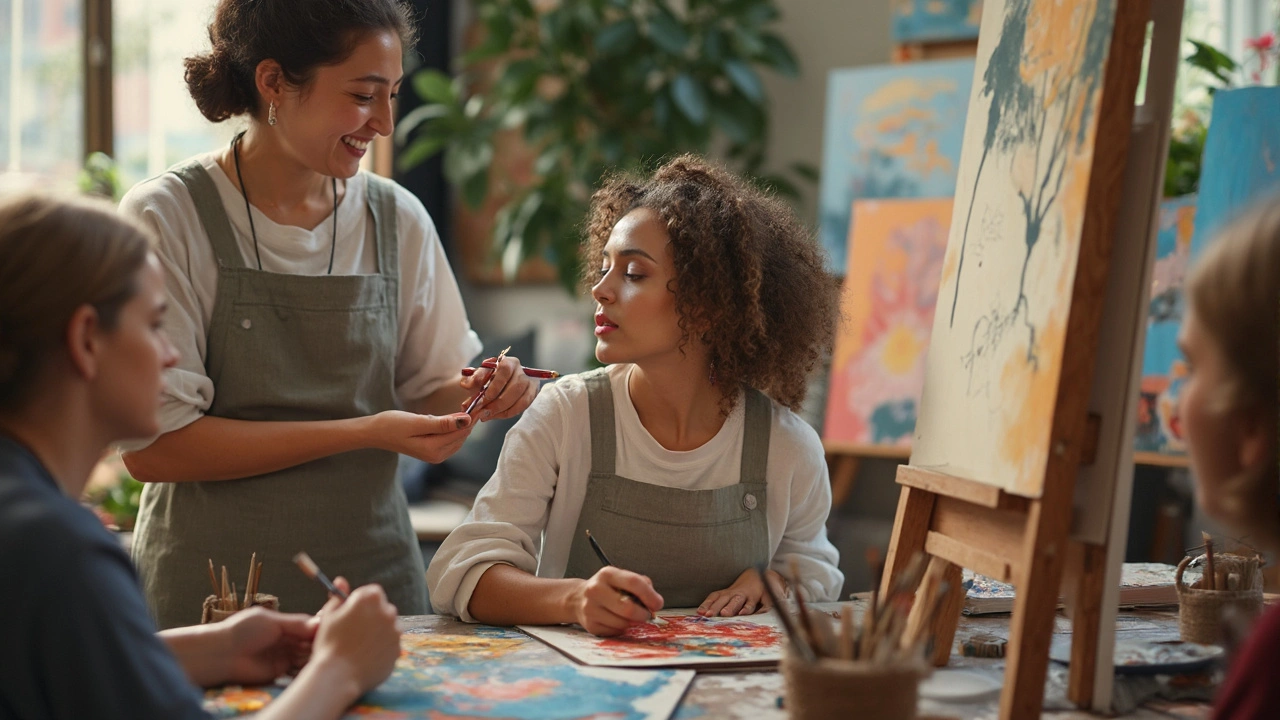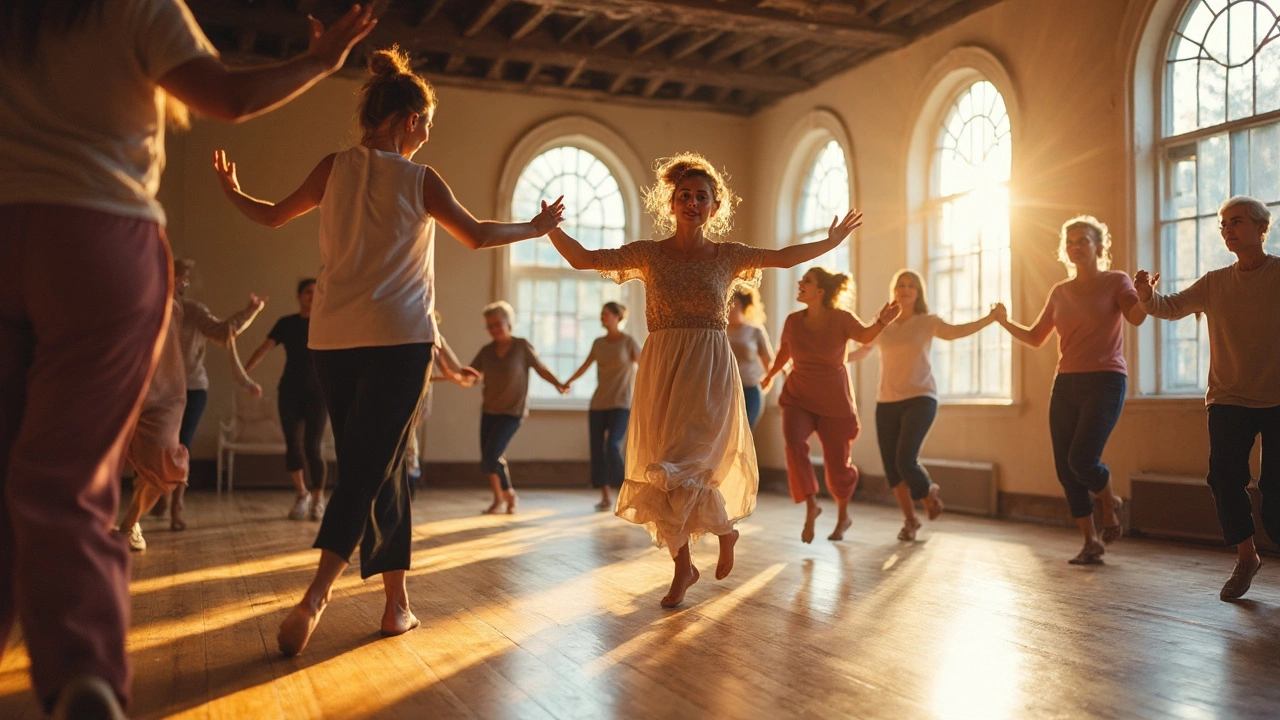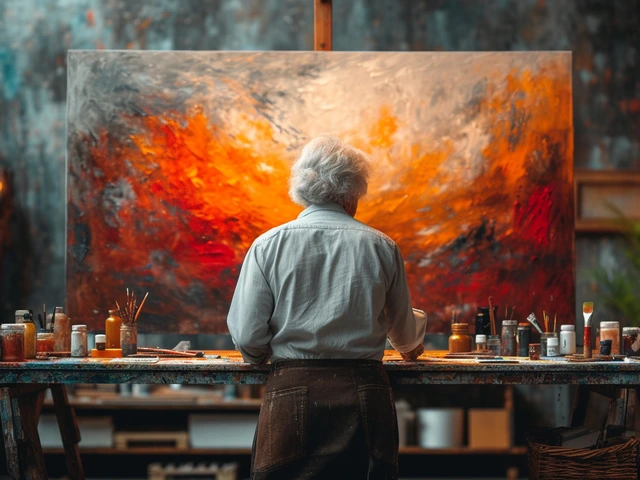
Have you ever wondered how art can change lives? Creative arts therapies might just be the answer you're looking for. By tapping into the power of creativity, these therapies help people explore their emotions and heal in ways that traditional therapy might not.
So, what exactly are creative arts therapies? They are therapeutic approaches that use different forms of art - think music, dance, drama, and visual arts - to help people express themselves and process their feelings. It's not about creating a masterpiece, but rather about the process of creating itself.
Why are they gaining popularity? Because they work in unique ways that many find effective, especially if you've struggled with conventional talking therapies. In our fast-paced world, where feelings often get bottled up, having a creative outlet can be a breath of fresh air.
Studies have shown that these methods are beneficial for people dealing with a variety of issues, from anxiety and depression to trauma recovery. It makes sense, right? After all, who hasn't felt better after belting out their favorite song or losing themselves in a good dance?
- Understanding Creative Arts Therapies
- The Benefits of Creative Expression
- Real-Life Success Stories
- How to Get Started with Creative Arts Therapies
Understanding Creative Arts Therapies
Alright, let's get into the nuts and bolts of what creative arts therapies are all about. Essentially, these therapies use various forms of art to help people express their feelings and work through challenges. They're not just about sitting in a circle and painting or jamming out on a guitar; there's more structured purpose behind them.
Types of Creative Arts Therapies
There are a few main types of creative arts therapies, and each comes with its unique approach:
- Music Therapy: This involves using music to engage people in therapeutic work. It could be playing instruments, singing, or even just listening to music that resonates with them.
- Dance/Movement Therapy: Movement is powerful. Dance therapy helps individuals express emotions that might be hard to express with words.
- Drama Therapy: By acting out stories or situations, people can gain insights into their emotional state and work on coping mechanisms.
- Art Therapy: This involves drawing, painting, or sculpting to explore emotions and boost self-awareness.
How It Works
You might be wondering, 'How do these therapies actually help?' It all comes down to expression. Many of us have thoughts and feelings locked away, often without even knowing it. By engaging in creative practices, we can unlock those and make sense of them.
For instance, healing through art can allow someone to express trauma when speaking about it is too painful. Plus, the act of creating can be calming, offering a break from the stress and anxieties of daily life.
Who Can Benefit?
Honestly, anyone can benefit from creative arts therapies, but they're especially effective for people struggling with mental health issues. They offer an alternative to traditional talk therapy, which can feel daunting for some. And good news: you don’t have to be an artist to benefit! The focus is on the process, not the end product.
These therapies are gaining recognition for their versatility. Whether you're dealing with anxiety, depression, PTSD, or even just looking for a way to cope with everyday stress, participating in creative arts therapies might be a game-changer for you.
So, if you're curious about getting started, look for therapists who specialize in these areas and offer sessions in your community. With a bit of exploration, you might just find a new way to express yourself and heal along the way.
The Benefits of Creative Expression
Have you ever experienced the joy of creating something from scratch? That's the magic of creative arts therapies—they're as much about the journey as the destination. Engaging in art, whether it’s painting, music, or dance, allows you to tap into parts of your brain that mundane tasks just don't reach.
Emotional Release
Creative expression is like opening a pressure valve. When life gets tough, translating those bottled-up emotions into art can be incredibly freeing. Take music therapy, for instance. Singing a sad tune or pounding out a rhythm can help process feelings you can't quite put into words.
Boosting Self-Esteem
Completing an art project gives a sense of accomplishment no matter how simple. It’s about putting yourself out there, flaws and all. With creative arts therapies, you might discover hidden talents or new perspectives that uplift your self-value.
Enhanced Problem-Solving Skills
When you're knee-deep in crafting, you're also exercising your brain's problem-solving muscles. Figuring out color combinations or how to express an idea through dance requires creative thinking. Those are skills useful in all walks of life.
Sense of Community
Art often brings people together. Maybe you've been to a choir practice or a group painting session. Through art expression, bonds form as people share experiences, offering support and understanding. It’s therapy without the couch.
Overall Well-being
Numerous studies indicate that visually engaging the brain through creative activities improves mood and reduces stress. In fact, a survey found that individuals who participate in creative activities are 30% less likely to report anxiety.
| Activity | Stress Reduction |
|---|---|
| Painting | 40% |
| Music | 35% |
| Dance | 50% |
Next time you're feeling overwhelmed, consider attending a healing through art workshop or starting a creative arts practice. You might just find more than solace—you'll find new ways of seeing yourself and the world.

Real-Life Success Stories
One of the most inspiring real-life success stories comes from the recovery journey of war veterans using art therapy to deal with PTSD. In the United States, the National Intrepid Center of Excellence implemented creative arts therapies, incorporating music and visual arts. Veterans found that through painting and playing instruments, they could express what was too difficult to say in words, leading to a significant drop in PTSD symptoms.
Children Find Their Voice with Drama Therapy
An amazing example of creative arts therapies in action is the use of drama therapy in schools. In Brisbane, a local school integrated drama into their weekly schedule for kids struggling with anxiety and communication issues. This allowed children to step into different roles and express themselves in safe scenarios. Teachers observed improved self-esteem and better interaction with peers. Kids who were once shy were now standing in front of the class engaging confidently.
Transforming Lives Through Dance
In another remarkable case, dance therapy made a profound impact on elderly patients with Alzheimer's. A study at a Melbourne aged care facility showed that regular dance sessions not only brightened the participants’ spirits but also enhanced memory retention and social connection. The rhythm and movement acted like a bridge, connecting them with pieces of their memory that had seemed lost.
Creative Arts in Mental Health Centers
Beyond individual success stories, entire health centers are seeing the benefits of incorporating art-based therapies. Reports from mental health agencies in Australia indicate that patients engaging in these therapies require less medication over time. A creative approach opens up new pathways to mental wellness, transforming lives in subtle but undeniable ways.
These stories are proof of how powerful and transformative creative arts therapies can be, driving home the point that when it comes to mental health, sometimes expression beats all else.
How to Get Started with Creative Arts Therapies
If you’re thinking about diving into the world of creative arts therapies, you're probably wondering where to start. Don’t worry, it’s easier than you might think. Let’s break it down.
1. Identify Your Interest
The first thing to do is figure out which art form speaks to you the most. Are you drawn to music, dance, drama, or visual arts? Picking something you already enjoy can make the process feel more natural and fun.
2. Find a Qualified Therapist
It’s important to work with a licensed therapist who specializes in creative arts therapies. You can often find them through therapy directories or local mental health clinics. Make sure to check their credentials and experience to ensure they're reputable.
3. Set Clear Goals
Before starting, think about what you hope to achieve. Are you looking to reduce stress, manage anxiety, or even just explore self-expression? Sharing these goals with your therapist can help tailor sessions to your needs.
4. Be Open and Patient
Remember, this process is about exploration and expression. You don’t need to be an expert artist or performer. Be open to trying new things and give yourself time to adjust. The aim is to connect with your emotions and find healing, so patience is key.
5. Practice Regularly
Engaging regularly with your chosen art form can enhance its therapeutic benefits. Consider setting aside time each week for your therapy sessions and for practice on your own.
Some Helpful Stats
Did you know that according to a study conducted by the American Art Therapy Association, over 80% of participants felt reduced stress levels after engaging in art therapy sessions?
Getting started with creative arts therapies can be a rewarding journey. By following these steps and keeping an open mind, you might just find it to be the healing process you’ve been searching for.





